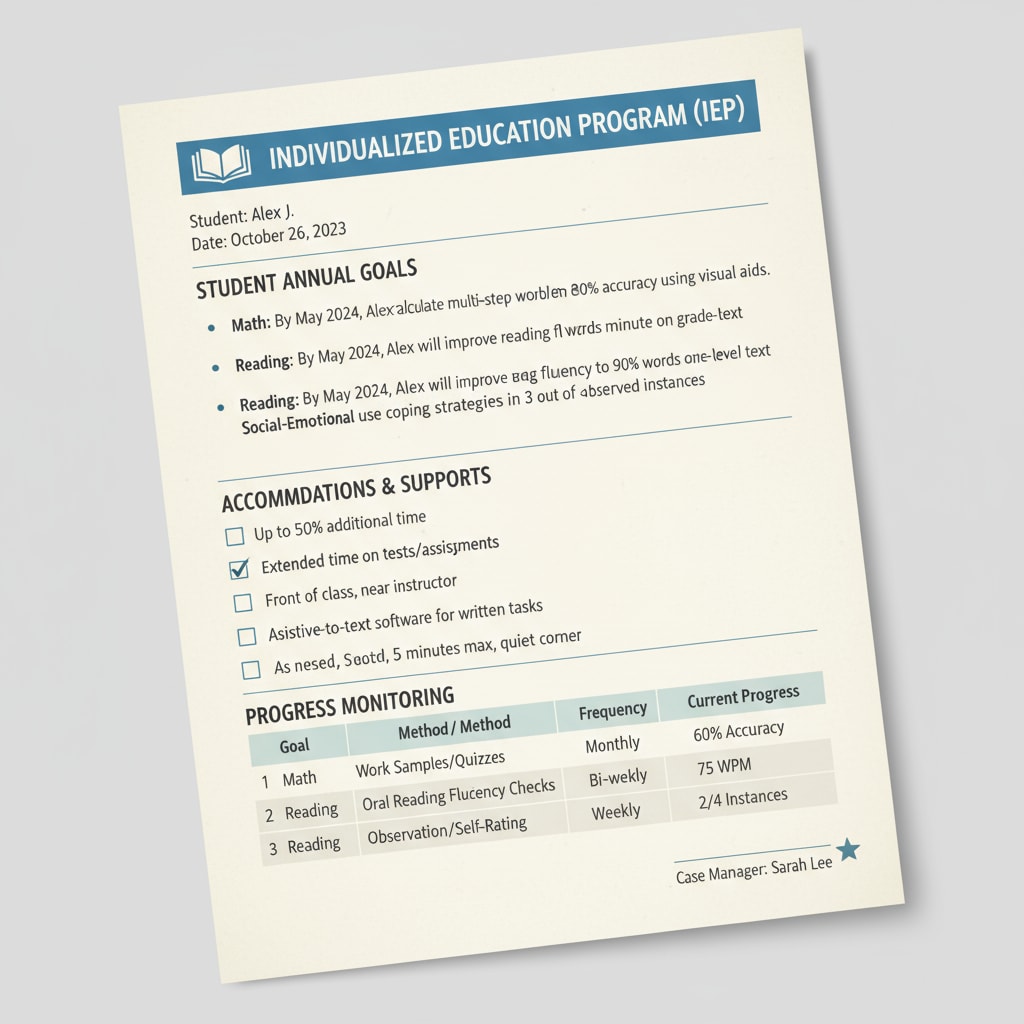Special education teachers often grapple with IEP, special education, understanding difficulties. The Individualized Education Program (IEP) is crucial in special education, yet deciphering and applying it can be a formidable task.

This article aims to shed light on these challenges and offer solutions.
The Complexity of IEP Documents
IEP documents are filled with intricate details. They contain specific goals, accommodations, and teaching strategies tailored to each student’s unique needs. For example, a student with a learning disability might have an IEP that outlines strategies to improve reading skills. However, these details can be overwhelming for teachers. The language used in these documents is often highly technical, with terms like “functional behavioral assessment” and “response to intervention.” As a result, teachers may struggle to fully grasp the implications of these terms and how they translate into effective teaching practices. Learn more about IEP basics on Understood.org

Factors Contributing to Understanding Difficulties
One factor is the lack of comprehensive training. Many special education teachers receive limited instruction on how to interpret and implement IEPs during their training. Additionally, the diverse nature of students’ disabilities adds another layer of complexity. For instance, an IEP for a student with autism may have different requirements compared to one for a student with a physical disability. Moreover, the constant updates and changes in special education laws and regulations can make it challenging for teachers to keep up. Get more information on special education law on NCLD.org
Another aspect is the time constraint. Teachers often have a heavy workload, which leaves them with limited time to thoroughly analyze each IEP. They may be juggling multiple students’ IEPs simultaneously, making it difficult to give each document the attention it deserves.
Readability guidance: Here, we’ve used short paragraphs to present factors simply. The lists help in clearly stating each contributing element. Transition words like “additionally” and “moreover” are used to smoothly connect ideas.
Strategies for Overcoming IEP Understanding Challenges
Professional development is key. Schools should provide regular training sessions on IEP interpretation and implementation. These sessions can include case studies, group discussions, and hands-on activities to enhance teachers’ understanding. For example, teachers can analyze real-life IEPs together and discuss how to apply the strategies in the classroom.
Collaboration is also essential. Teachers should work closely with special education coordinators, speech therapists, and other professionals. By sharing insights and experiences, they can gain a deeper understanding of different aspects of IEPs. For instance, a speech therapist can provide valuable input on goals related to communication skills in an IEP.
Finally, using technology can be a game-changer. There are various software and online tools available that can help teachers organize and manage IEPs more effectively. These tools can also provide reminders and alerts to ensure that teachers stay on top of their students’ needs.
In conclusion, while special education teachers face IEP, special education, understanding difficulties, there are ways to overcome them. By addressing the factors contributing to these challenges and implementing effective strategies, teachers can better utilize IEPs to support their students’ learning and growth.


